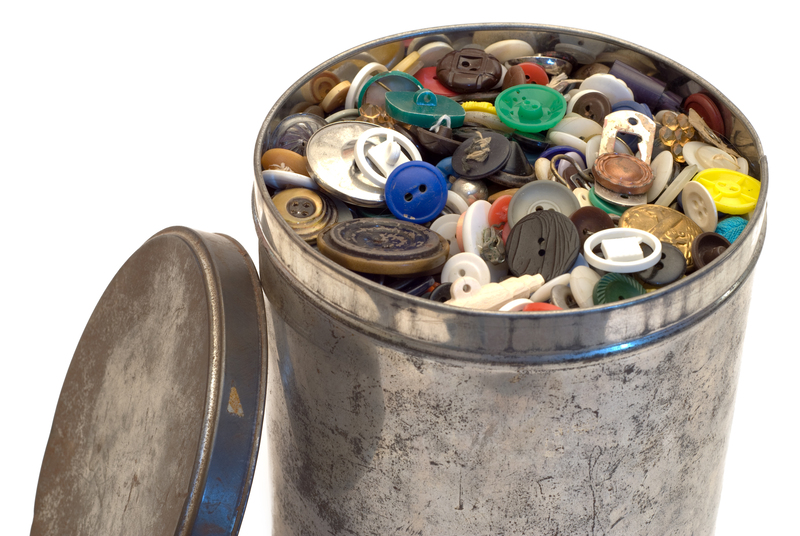How Innovation Can Battle Microplastic Pollution
Microplastics--tiny plastic particles less than 5mm in length--have emerged as a significant environmental challenge on a global scale. Their infiltration into oceans, freshwater bodies, soils, and even the air we breathe is raising alarms among scientists, policymakers, and the general public. However, *innovation* is providing hope in the battle against escalating microplastic pollution. By leveraging new technologies, sustainable materials, and informed policies, we can envision a future where the impact of microplastics is dramatically mitigated. In this comprehensive article, we will delve into how innovation is becoming the driving force to combat microplastics, exploring various solutions, research trends, and actions individuals and governments can take.

Understanding the Microplastic Threat
Microplastics originate from diverse sources. These include the breakdown of larger plastic debris, synthetic fibers from clothing, and microbeads in personal care products. Once released, *microplastic particles* disperse ubiquitously--ending up in seafood, drinking water, and even the human bloodstream. The threat extends beyond physical pollution; microplastics can absorb hazardous chemicals and transport them across food webs, posing risks to both ecosystems and human health.
- Primary microplastics: Intentionally manufactured small plastics, such as microbeads and pellets used in industrial production.
- Secondary microplastics: Fragments formed from the degradation of larger plastic waste due to sunlight, wave action, and other environmental factors.
Health and Environmental Impacts
*Scientific studies* increasingly link microplastics to numerous environmental and health concerns:
- Disruption of marine and aquatic life by ingestion and entanglement
- Bioaccumulation of toxins up the food chain
- Potential impairment to human organs and hormone systems
Given the scope and scale of the issue, conventional methods of tackling plastic pollution are no longer sufficient. Here's how *innovative strategies* are redefining the fight against microplastic pollution.
How Innovation Is Addressing Microplastic Pollution
The battle against microplastic contamination is multi-faceted, requiring inventive approaches across diverse industries and sectors. Let's explore the most promising breakthroughs and strategies.
1. Technological Solutions in Wastewater Treatment
Municipal and industrial wastewater treatment plants are significant conduits for microplastic passage into the environment. Innovation in wastewater filtration technology plays a critical role:
- Advanced filtration systems--such as membrane bioreactors and nanotechnology filters--trap microplastics effectively before water is discharged into natural water bodies.
- Electrocoagulation, which uses electrical currents to aggregate microplastics, making them easier to remove.
Several *start-ups and research groups* are also developing retrofitting devices for older plants, ensuring these advancements can be adopted globally, not just in newly-built infrastructures.
2. Innovative Biodegradable Materials
One game-changing solution in the fight against *microplastic emissions* is the development of sustainable, biodegradable alternatives to traditional plastics:
- Bioplastics derived from corn, sugarcane, and algae break down faster and do not fragment into long-lasting microplastics.
- Edible packaging designed for food products eliminates waste altogether.
Investing in *eco-friendly materials* reduces the risk of future microplastic accumulation and encourages industries to rethink their materials supply chains.
Textile Innovations to Reduce Fiber Shedding
The fashion industry is a primary contributor to fiber-based microplastic pollution through synthetic fabrics like polyester and nylon. Innovations in textile manufacturing are making a difference:
- High-quality synthetic fibers that shed less during washing.
- Microplastic capture bags and washing machine filters (such as the Guppyfriend bag and integrated appliances) trap microfibers before they enter wastewater.
- Research into organic coatings that reduce fiber friction and release.
These methods, when combined with consumer awareness and changes in laundering behavior, can significantly shrink the volume of microplastic fibers entering rivers and oceans.
3. Chemical and Biological Degradation
*Researchers* are investigating the potential of enzymes, fungi, and bacteria to "eat" or break down microplastics:
- Enzyme technology, such as enzymes derived from Ideonella sakaiensis bacteria, shows promise in plastically degrading polyethylene terephthalate (PET).
- Specially engineered fungi secrete substances breaking plastic bonds at the molecular level.
While this technology is in a developmental stage, it offers a potential long-term sustainable solution for removing persistent microplastics from land and sea.
4. Smart Environmental Monitoring
An essential innovation in battling microplastic pollution is the deployment of *smart sensors, AI, and robotics* to monitor and remove microplastics:
- Autonomous drones and aquatic robots designed to skim microplastics from water surfaces.
- AI-driven mapping systems that pinpoint pollution hotspots for targeted intervention.
- Low-cost, real-time water testing kits that empower communities to monitor their local water sources.
The power of data-driven environmental monitoring ensures a swift response to emerging pollution and informs policy and cleanup strategies.
Innovation at Policy and Consumer Levels
Technical advancements alone cannot succeed without supportive laws, corporate responsibility, and consumer-driven shifts. Here's how policy and public engagement can amplify innovative solutions to microplastic pollution:
Government Regulations and Bans
- Many countries have instituted bans on microbeads in cosmetics, a move that has directly curtailed one source of primary microplastics.
- Regulation of single-use plastics, mandatory labeling of plastic content in products, and stricter waste management standards are being adopted worldwide.
- Extended producer responsibility (EPR) laws require manufacturers to handle the lifecycle impacts of their products, stimulating innovations in design and end-of-life solutions.
Corporate Responsibility and Green Innovation
Leading brands are harnessing the power of sustainable innovation:
- Adopting plastic-free packaging, upcycling initiatives, and biodegradable alternatives.
- Sponsoring research and participating in collaborative industry efforts to set higher sustainability benchmarks.
Such commitments not only benefit the environment but also attract eco-conscious consumers--creating a positive feedback loop that drives continuous innovation.
Consumer Choices and Grassroots Action
- Educated consumers can favor garments made with natural fibers, minimize use of synthetic textiles, and use washing machine filters.
- Proper waste disposal and participation in plastic cleanup drives help intercept plastic before it fragments into microplastics.
- Public demand for transparent labeling and ethical product sourcing holds manufacturers accountable and accelerates innovation adoption.

Global Collaborative Efforts: The Way Forward
Microplastic pollution is a transboundary problem--particles travel thousands of miles from their source, ignoring borders. To effectively confront this challenge, global collaboration is essential.
International Projects and Agreements
- The United Nations is coordinating international research, knowledge sharing, and policy formation aimed at reducing plastic and microplastic pollution.
- Initiatives such as the Global Plastics Treaty and the Global Partnership on Marine Litter (GPML) promote cross-border cooperation on innovative solutions.
Science, Funding, and Future Opportunities
Governments, the private sector, and philanthropy are investing substantially in *innovation against microplastics*. Examples include:
- Funding for academic and commercial R&D in advanced materials and water treatment technologies.
- Cross-sector hackathons, challenges, and prize funds (like the XPRIZE) focused on scalable solutions.
The scientific community is also prioritizing microplastic reduction through open data, shared best practices, and collaborative research.
Conclusion: The Future of Innovation in Microplastic Pollution Control
Eradicating microplastic pollution is an immense challenge, but the tide is turning, thanks to unprecedented innovation. Technological, material, and policy breakthroughs are emerging daily, paving the way for cleaner oceans, safer food, and healthier communities.
- Innovative filtration systems and green chemistry are reducing the release and accumulation of microplastics at the source.
- Biodegradable materials and improved recycling infrastructures are creating closed-loop systems and reducing dependency on fossil-fuel plastics.
- Education, community participation, and smart policymaking ensure these solutions are widely adopted and effective.
While there is no single silver bullet, a coordinated, innovative approach--spanning technology, policy, business, and society--can reshape the trajectory of microplastic pollution. Embracing innovation is our best shot at healing the planet and securing a sustainable future for generations to come.
Let us champion creative solutions, demand accountability, and foster a culture of responsible innovation--because together, we can win the battle against microplastics.